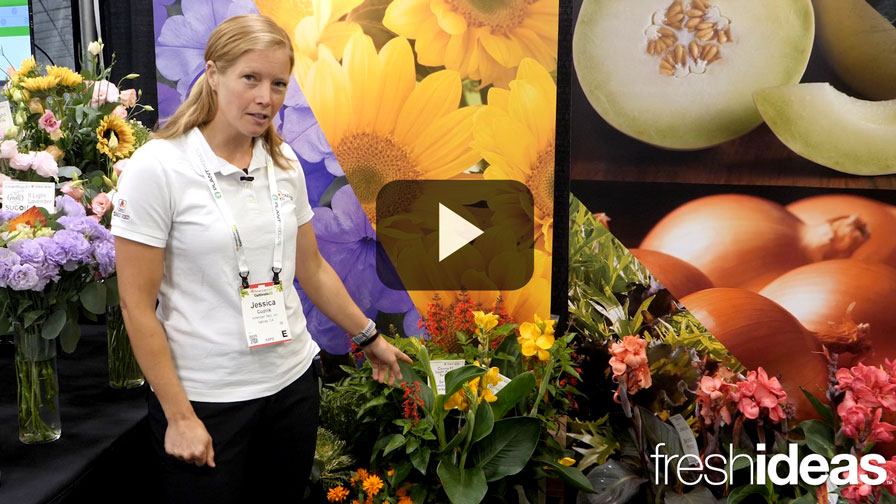Matching Your Pots to Your Greenhouse Equipment

At Cultivate’21, AgriNomix introduced three new pot dispensing machines, including the PD-X3 greenhouse pot dispenser, which is capa-ble of filling single, two-row trays at up to 400 pots per hour. Photos: AgriNomix
Adding new equipment to your greenhouse can make you more efficient, but not if it doesn’t line up with the pots you’re running through your systems. This is why both technology companies and plant container providers are focused on making sure their product offerings are consistent in meeting grower needs.
What Makes a Container Automation Compatible
According to HC Companies, a pots and planters provider, an automation-compatible container should have uniform spacing between the container rims when stacked and a defined round or square rim for automated de-stacking tools to grab for easy denesting. If there is not enough space for the automated flange, lugs, or spool-type strippers to grab the rim, growers run the risk of pulling multiple containers into the machine all at once, with the loose containers becoming jammed in the equipment.
“If you are planning on using automated handling equipment such as fork systems, you will want to make sure there is a defined rim that protrudes far enough from the container body so it can securely rest on the tines,” the company emphasized earlier this year in an educational blog post on its website. “Additionally, a sturdy side wall construction is necessary in order to withstand the force of the automated equipment (especially helpful on conveyers). If the walls are too thin, they can often crush under the machine’s pressure. However, the side walls should not be so rigid that they are unable to safely flex when the fork tines are inserted between containers.”
The post also highlights how specific container designs can work:
- Blow mold containers, while a popular choice for nursery growers in the field, are not ideal for use with automated equipment. Their thin, sidewall construction and ribbing causes challenges with denesting equipment and conveyor tables, and the absence of a pronounced rim prevents them from being used with fork systems.
- Injection containers, on the other hand, are a solid choice for automated equipment. Injection containers are manufactured with thick sidewalls and heavy bottom construction to withstand the force of automated machinery, and sturdy, protruding rims provide excellent support for automated handling equipment, as well as seamless denesting.
- For growers familiar with thermoform containers, they do pose some limitations to consider before implementing. While they are promoted as automation friendly, thermoform containers are not an ideal choice for dispensing equipment based on denesting challenges, but can be used with fork systems if the rims protrude sufficiently. It is important to remember that thermoform containers are traditionally lighter weight for a lower cost, which means they may not be able to endure the physical demands of some automated equipment.
HC Companies offers a closer look at growing container automation in a video on its YouTube page. Check it out here.
Potting Line Innovations
AgriNomix in Oberlin, OH, is one company that is continually striving to develop new technologies to best assist greenhouse and nursery operations to achieve more efficient, cost-saving production processes. This includes configuring equipment designs to match pots and trays.
At Cultivate’21, AgriNomix introduced three new pot dispensing machines. The greenhouse Pot Dispensers PD-X1 and PD-X3 are capable of filling single, two-row trays at up to 400 per hour, and 3 trays at a time up to 1,000 per hour, respectively. Coming soon will be an updated PD-X3 model with capabilities to achieve throughput on two-row trays greater than 2,000 per hour. Both the PD-X1 and PD-X3 models are capable of dispensing round and square pots ranging in sizes from 2.5 inches to 6 inches.
Also new is a nursery can dispenser, CD-X1, that mechanically separates stacks of pots, moves them along a chain conveyor, then tips them onto a conveyor that takes them to a filling station. The CD-X1 is capable of separating and dispensing nursery cans in excess of 1,800 units per hour with pots ranging in diameters from 6½ inches to 15 inches.
For growers looking to further optimize production line efficiencies, Mike Vallafskey, Vice President – Sales at AgriNomix, says they can pair the PD-X1 and PD-X3 Pot Dispensers with an AgriNomix Tray Dispenser. This integrated system offers significant labor savings and is a flexible alternative to manually filling pot trays. For ease and reliability in tray dispensing, Vallafskey says it is important for growers to make sure their tray designs include automation-friendly notches that are molded into the finished product.
“The fewer human touches in the process, the greater cost savings there are to achieve,” Vallafskey says. “All growers are looking for process reliability, staff optimization, and greater production throughput, and the AgriNomix pot dispensers were engineered to help achieve these goals. By enhancing current methodologies with pot and tray dispensing technology, growers can drive cost out of their operation while at the same time providing employees with a safer and user-friendly alternative solution to tray filling challenges.”
Typically, Vallafskey says, manual tray dispensing and tray filling processes can require at least five employees to successfully operate without constraining operations downstream.
“With an integrated, automated process, growers are able to reduce station headcount to one of two operators while increasing the overall speed of operation,” Vallafskey says. “With overall speed increased, the number of hours or days to complete a batch production run is reduced by days, if not weeks.”









